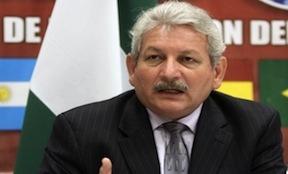Recent targeted assassinations coupled with the capture of the alleged Colombian leader of a drug trafficking group linked to payback killings in Santa Cruz, Bolivia highlight the eastern province’s growing status as a transnational crime hub.
Over the last two weeks at least five people have been murdered in Santa Cruz in what appear to be revenge killings, which the province’s Governor Ruben Costas has attributed to drug trafficking groups, reported La Razon. He also said Santa Cruz was becoming increasingly violent because of the illegal drug trade.
On July 23, Bolivian law enforcement agents captured Alicia Lorena Vargas Muñoz, alias “La Mona,” a Colombian national who allegedly ran a drug trafficking group with international ties and who has been implicated in Santa Cruz murders, reported El Deber. Vargas was arrested along with four other individuals.
According to police investigations, one victim — killed in April 2013 — was a Peruvian national who had fled to Bolivia after failing to pay a drug trafficking debt. Vargas allegedly tracked him down in Santa Cruz and sent hit men to kill him.
InSight Crime Analysis
Bolivia is both a cocaine producer and a transit nation for Peruvian cocaine. Most of the cocaine coming from Bolivia is sold to domestic markets in Brazil and Argentina or shipped from those countries on to Europe. An estimated 80 percent of Bolivian cocaine is smuggled into Brazil, much of it passing through the Santa Cruz province, which shares a border with Brazil and has become a major drug trafficking hub.
As a result — as the capture of Vargas highlights — a number of international drug trafficking groups have begun operations or have emissaries in the province, including the Brazilian prison gangs the First Capital Command (PCC) and the Red Command. In 2011, a Colombian intelligence officer stated that as many as 3,000 Colombian drug traffickers operated in Santa Cruz. In some cases, the foreign criminals setting up shop in Santa Cruz are fleeing prosecution in their home countries and apparently see the Bolivian province as a relative safe haven.
SEE ALSO: Coverage of Bolivia
The most recent killings could be a sign of rising violence connected to the drug trade as the presence of foreign crime groups continues to grow. In comparison, just three drug-related shootings reportedly took place in June of 2011.

